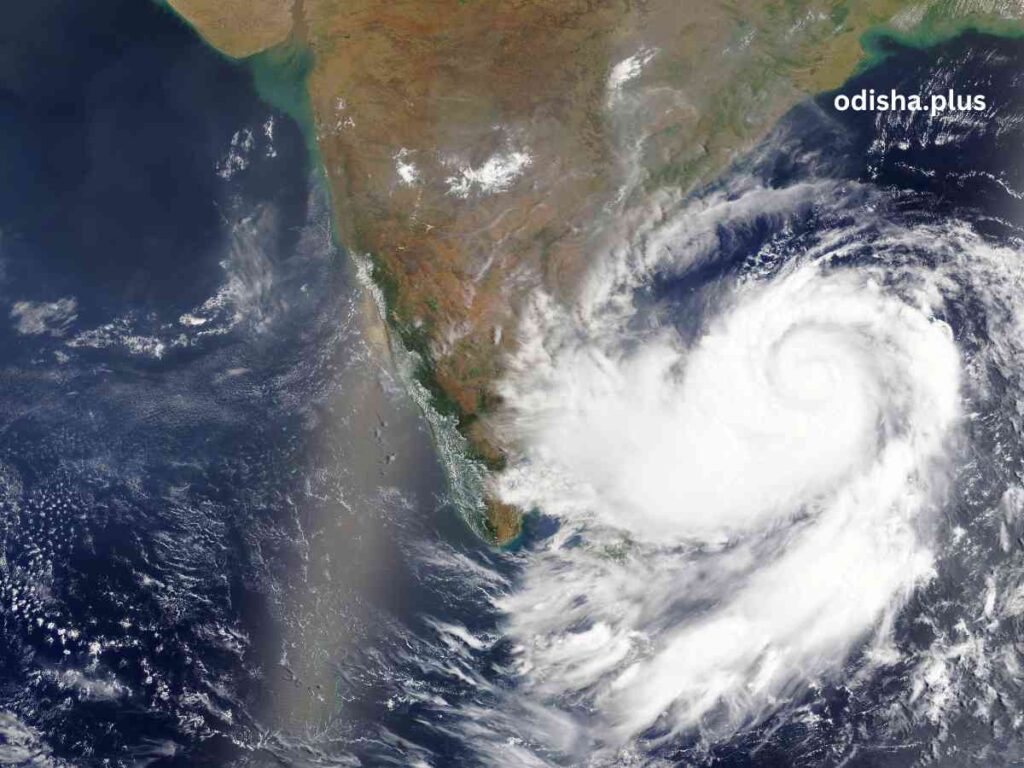Odisha is worst affected by tropical cyclones experiencing landfall of 260 cyclones within a time span of 100 years
Gopabandhu Mohapatra

India is a subcontinent surrounded by oceans from three sides and is more prone to cyclones. Although cyclones affect the entire India, yet east coast is more prone to cyclone than west coast. Among all the east coastal states, Odisha is worst affected by tropical cyclones experiencing landfall of 260 cyclones within a time span of 100 years.
The Indian subcontinent is one of the worst affected regions in the world. The subcontinent with a long coastline of 8041 kilometers is exposed to nearly 10 per cent of the world’s tropical cyclones. Of these, majority of them have their initial genesis over the Bay of Bengal and strike the East coast of India. On an average, five to six tropical cyclones form every year, of which two or three could be severe.
More cyclones occur in the Bay of Bengal than the Arabian Sea and the ratio is approximately 4:1. Cyclones occur frequently on both the coasts (the West coast – Arabian Sea; and the East coast – Bay of Bengal). An analysis of the frequency of cyclones on the East and West coasts of India between 1891 and 1990 shows that nearly 262 cyclones occurred (92 of these severe) in a 50 km wide strip above the East coast. Less severe cyclonic activity has been noticed on the West coast, where 33 cyclones occurred the same period, out of which 19 were severe.
Tropical cyclones occur in the months of May – June and October – November. Cyclones of severe intensity and frequency in the North Indian Ocean are bi – modal in character, with their primary peak in November and secondary peak in May. The disaster potential is particularly high during landfall in the North Indian Ocean (Bay of Bengal and the Arabian Sea) due to the accompanying destructive wind and storm surges torrential rainfall. Of these, storm surges cause the most damage as sea water inundates low lying areas of coastal regions and causes heavy floods, erodes beaches and embankments, destroys vegetation and reduces soil fertility.
Cyclones are fairly common, with an average of about 80 storms globally each year. However, rising sea surface temperatures due to global warming are changing this trend. The sea temperature should be at least 26°C to a depth of 60 meters. The ocean surface should have a lot of water vapor evaporating into the atmosphere. The atmosphere becomes unstable, which encourages the formation of large cumulus clouds.
When sea temperature touches 26.5 degrees celsius or more, it helps a low pressure to intensify. Air from surrounding high-pressure areas flows into the low-pressure zone; causing warming up and creating a cyclone. The air starts to spin, picking up speed as it spirals inward rotation. A calm, cloudless area called the ‘eye’ forms in the center of the cyclone. A high-pressure area forms around the outer edge of the cyclone, causing the wind to blow outward. The inward spiraling winds and outward flowing winds create a spiral shape
Cyclones vary in diameter from 50 to 320 km but their effects dominate thousands of square kilometers of ocean surface and the lower atmosphere. The perimeter may measure 1,000 km but the powerhouse is located within the 100-km radius. Nearer the Eye, winds may hit at a speed of 320 km. Thus, tropical cyclones, characterized by destructive winds, torrential rainfall and storm surges disrupt normal life with the accompanying phenomena of floods due to the exceptional level of rainfall and storm surge inundation into inland areas.
Cyclones are characterized by their devastating potential to damage structures, viz. houses; lifeline infrastructure-power and communication towers; hospitals; food storage facilities; roads, bridges and culverts; crops etc. The most fatalities come from storm surges and the torrential rain flooding the lowland areas of coastal territories.
Odisha has encountered 10 cyclones, in a span of 25 years and the frequency of such natural disasters is on the rise. In Odisha cyclonic storm exposes people and landscape to the impact of three types of hazards i.e. high speed wind, storm and tidal surge, heavy torrential rainfall which leads to physical destruction, inflow of saline water to low-lying area, resulting sub-emersion. The severe storms of 1942, 1967, 1971, 1977 and 1990 have led to devastation of public life, public property and number of death tolls. But the Super Cyclone of 1999 broke all the records of 100 years regarding intensity of the hazard and loss of life & property.
Memories of the 1999 super cyclone is still fresh and the wind speed of which could not be properly ascertained at the Meteorological Centre, Bhubaneswar, as the velocity crossed the capacity of the anemometer available then. The 1999 disaster, which left over 10,000 people dead, the state had experienced another major calamity in cyclone Phailin. It made landfall near Gopalpur in Ganjam district on October 12, 2013, becoming the second strongest tropical cyclone in India since the 1999 one. It had hit Odisha at a wind speed of 140 mph.
Twenty-three people were killed in the cyclonic storm of Phailin during 2013, which was followed by cyclone Hudhud in 2014 that struck the Visakhapatnam city of Andhra Pradesh on October 12, 2014. Odisha, too, was affected by Hudhud. More than 60 people lost their lives in Andhra Pradesh, while the casualty count in the state was two.
Subsequently, Cyclone Titli in 2018 had left authorities in shock, as the weather system had unexpectedly changed its course and entered Gajapati district, where no major preparations were made to deal with the calamity. Seventy-seven people were killed in Odisha due to heavy rainfall and landslide that accompanied the cyclone.
In the year 2019, two cyclones Fani and Bulbul – hit the country’s eastern coast, causing extensive damage in Odisha and West Bengal. Fani had reached its peak intensity a day before its landfall and was marked as a high-end Category-4 major hurricane, with maximum sustained wind speed ranging from 209-251 kmph.
Cyclone Amphan in 2020 had also claimed lives and damaged property in Odisha and West Bengal. It made landfall near Bakkhali in West Bengal on May 20. It was the first pre-monsoon super cyclone of this century that emerged from the Bay of Bengal.
In May 2021, Cyclone Yaas (May 23, 2021) hit Odisha’s Dhamra and left two people dead. Shortly after, in September, Cyclone Gulab (September 26, 2021) crossed the Odisha-Andhra Pradesh coast, bringing with it heavy rain. The remnants of Cyclone Gulab then gave rise to Cyclone Shaheen (October 3, 2021), in a unique weather phenomenon. More than 20 people across different states and neighbouring countries died in cyclone Gulab. No death, however, was reported in Odisha, records show.
Odisha has braced Cyclone Jawad (December 3, 2021), which is being considered as the first winter cyclone in the state in about 100 years. The system has, however, weakened and may even escape its coast. The Meteorological Centre, Bhubaneswar, stated that climate change was a major factor for increase in frequency of cyclones.
The practice of naming cyclones has become a global standard, simplifying communication and tracking of these storms. The World Meteorological Organization (WMO) oversees the naming process to ensure that names are culturally neutral, easy to pronounce, and do not offend any group.
Cyclone names are submitted by member countries during annual or biennial meetings, and each name must meet specific criteria to be approved. In the North Indian Ocean, a collaborative list of cyclone names was established by 13 countries, including India, Bangladesh, Qatar and others, as of April 2020. The name Shaheen was given by Qatar. Gulab was proposed by Pakistan. Recent cyclone is named as ‘Dana,’ meaning ‘generosity’ in Arabic, was suggested by Qatar.
This naming ensures that each cyclone is easily identified by a unique name, making it simpler for the media and the public to follow its progress and potential threats. Names on the list are rotated periodically, with new suggestions replacing retired names—those that are deemed too deadly or destructive to be reused. The WMO emphasizes that naming tropical cyclones simplifies tracking and communication, particularly when multiple storms are active.
(Author is a Former Banker. Views expressed are personal)




























